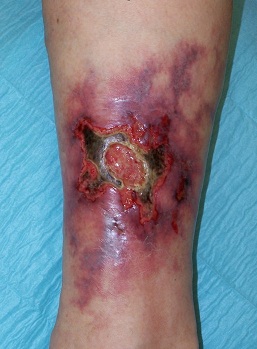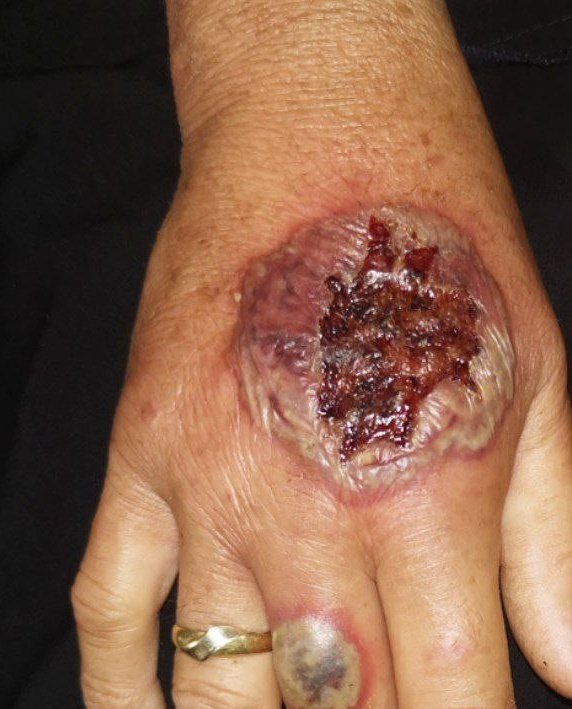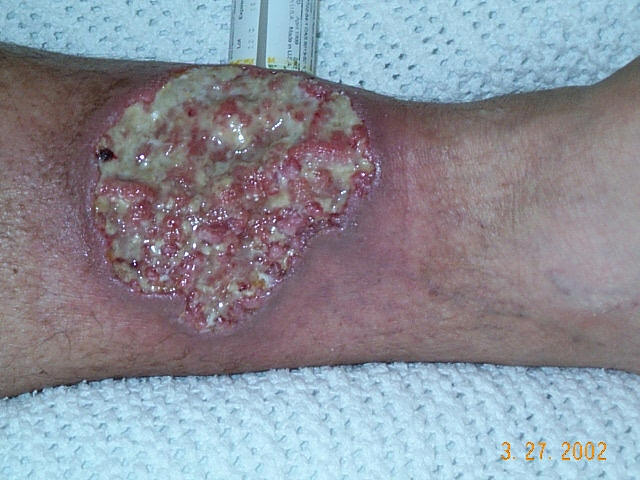Makindo Medical Notes"One small step for man, one large step for Makindo" |
|
|---|---|
| Download all this content in the Apps now Android App and Apple iPhone/Pad App | |
| MEDICAL DISCLAIMER: The contents are under continuing development and improvements and despite all efforts may contain errors of omission or fact. This is not to be used for the assessment, diagnosis, or management of patients. It should not be regarded as medical advice by healthcare workers or laypeople. It is for educational purposes only. Please adhere to your local protocols. Use the BNF for drug information. If you are unwell please seek urgent healthcare advice. If you do not accept this then please do not use the website. Makindo Ltd. |
Pyoderma gangrenosum
-
| About | Anaesthetics and Critical Care | Anatomy | Biochemistry | Cardiology | Clinical Cases | CompSci | Crib | Dermatology | Differentials | Drugs | ENT | Electrocardiogram | Embryology | Emergency Medicine | Endocrinology | Ethics | Foundation Doctors | Gastroenterology | General Information | General Practice | Genetics | Geriatric Medicine | Guidelines | Haematology | Hepatology | Immunology | Infectious Diseases | Infographic | Investigations | Lists | Microbiology | Miscellaneous | Nephrology | Neuroanatomy | Neurology | Nutrition | OSCE | Obstetrics Gynaecology | Oncology | Ophthalmology | Oral Medicine and Dentistry | Paediatrics | Palliative | Pathology | Pharmacology | Physiology | Procedures | Psychiatry | Radiology | Respiratory | Resuscitation | Rheumatology | Statistics and Research | Stroke | Surgery | Toxicology | Trauma and Orthopaedics | Twitter | Urology
Related Subjects: |Pyoderma gangrenosum |Pemphigus Vulgaris |Toxic Epidermal Necrolysis |Stevens-Johnson Syndrome |Necrotising fasciitis
💥 Always consider Pyoderma Gangrenosum (PG) when assessing ulcerated skin lesions. PG is a rare, non-infectious, inflammatory skin condition characterized by painful ulcers. It is often associated with systemic diseases like IBD, rheumatoid arthritis, and haematologic disorders.
ℹ️ About Pyoderma Gangrenosum
- ⚠️ Often mistaken for common ulcers — always think beyond “just venous ulcers.”
- 👩⚕️ Consider differential diagnoses including skin cancers and atypical infections.
- 🧪 If in doubt → refer to dermatology and consider biopsy.


🩺 Clinical Features
- 🔥 Pain: Severe pain, often disproportionate to appearance.
- 🟣 Edges: Undermined, violaceous/blue borders.
- ⚫ Base: Necrotic with purulent/granulomatous tissue.
- 📏 Size: May start small → rapidly expanding ulcers.
- 📍 Sites: Lower legs, surgical wounds, stomas (pathergy phenomenon).
- 🔄 Onset: Often begins as papules, pustules, or vesicles → ulcerates.
- 💥 Trigger: Minor trauma (pathergy) can precipitate.
- 🔗 Associated Diseases: RA, UC, Crohn’s, myeloma, haematologic malignancy.
- 💊 Drugs: Rarely hydroxyurea, GM-CSF.
🧬 Causes and Associations
- ❓ Idiopathic (~20%).
- 🧻 IBD: Crohn’s, ulcerative colitis.
- 🩸 Haematologic: Lymphoma, leukaemia, myeloma, myeloproliferative disease.
- 🛡️ Autoimmune: RA, primary biliary cirrhosis.
- 🦠 Other: Hepatitis, HIV, monoclonal gammopathies.
🔍 Investigations
- 📊 FBC, ESR, CRP (raised inflammatory markers).
- 🔬 Skin biopsy → neutrophilic dermatosis (helps exclude other causes but not pathognomonic).
- 🧫 Exclude infection (cultures, swabs).
- 📋 Screen for underlying systemic disease (IBD, RA, haematology).
🩹 Management
- 🚫 Avoid trauma: Surgery/skin grafting can worsen due to pathergy.
- 💊 Topical therapy: Potent corticosteroids, tacrolimus ointment.
- 💊 Pain relief: Analgesia is essential (often very painful ulcers).
- 🩼 Wound care: Non-adhesive dressings, prevent secondary infection.

💉 Systemic Treatments
- 🌟 Corticosteroids: First-line for moderate–severe disease.
- 💊 Immunosuppressants: Ciclosporin, methotrexate (steroid-sparing).
- 🧬 Biologics: TNF-α inhibitors (infliximab, adalimumab) — effective esp. in IBD-related PG.
- 🦠 Antibiotics: Only if secondary infection present (not primary therapy).
🚨 Key Teaching Point: PG is a neutrophilic dermatosis, not an infection. Surgical debridement often makes it worse (pathergy). Always treat underlying systemic disease.
🩺 Case 1 — Associated with Inflammatory Bowel Disease
A 32-year-old woman with ulcerative colitis develops a rapidly enlarging, extremely painful ulcer on her left shin. The lesion has a violaceous undermined edge and a purulent base. She has no signs of cellulitis. Management: 💊 High-dose corticosteroids or ciclosporin; optimise underlying IBD therapy. Wound care and pain relief are essential. Avoid: ❌ Surgical debridement (pathergy phenomenon can worsen lesions); avoid unnecessary antibiotics unless secondary infection is proven.
🩺 Case 2 — Pyoderma Gangrenosum with Rheumatoid Arthritis
A 60-year-old man with long-standing rheumatoid arthritis presents with an ulcer on his right calf, which started as a pustule and progressed to a painful necrotic ulcer with bluish borders. Blood cultures are negative. Management: 🩺 Systemic immunosuppression (steroids, ciclosporin, biologics such as TNF-α inhibitors in refractory cases). Multidisciplinary approach with dermatology and rheumatology input. Avoid: ❌ Mistaking for infective cellulitis and performing repeated surgical interventions; avoid stopping essential RA medications without rheumatology advice.